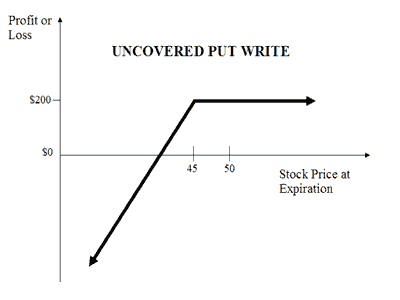Cash dividends (most common) are those paid out in currency, usually via electronic funds transfer or a printed paper check. Such dividends are a form of investment income and are usually taxable to the recipient in the year they are paid. This is the most common method of sharing corporate profits with the shareholders of the company. Thus, if a person owns 100 shares and the cash dividend is $0.50 per share, the holder of the stock will be paid $50.
Another problem with the ratio is the underlying assumption that the amount of cash generated by a business matches its reported net income. This may not be the case, and especially under the accrual basis of accounting, where there can be a substantial divergence between the two numbers. When cash flows significantly differ from net income, the outcome of the retention ratio is highly suspect.
Is National Fuel Gas Company’s (NYSE:NFG) Latest Stock Performance A Reflection Of Its Financial Health? – Simply Wall St
Is National Fuel Gas Company’s (NYSE:NFG) Latest Stock Performance A Reflection Of Its Financial Health?.
Posted: Tue, 08 Aug 2023 17:37:17 GMT [source]
She has worked in multiple cities covering breaking news, politics, education, and more.
What is Retention Ratio?
The retention ratio (also known as the net income retention ratio or plowback ratio) is the ratio of a company’s retained income to its net income. The retention ratio measures the percentage of a company’s profits that are reinvested into the company in some way, rather than being paid out to investors as dividends. To calculate the retention ratio, the formula subtracts the common and preferred dividends distributed from the net income of the current period and then divides the difference by the current period’s net income value. The inverse of the retention ratio is called the “dividend payout ratio”, which measures the proportion of net income paid out as dividends to shareholders.
The board of directors may declare a dividend but not authorize payment until a period outside of when the retention ratio is being calculated, so no dividend subtraction appears in the numerator. An alternative method to calculate the retention ratio is by subtracting the payout ratio from one. If the former is chosen, the percentage of profits that the company opts to hold onto as opposed to paying out as dividends increases – which is quantified by the retention ratio. Looking at the company’s historical growth rate and comparing it to this projected future growth rate, we see similarities not unlike the above example with Paychex. There is simply no way for a company to see high growth without drastically increasing their retention ratio or ROE, outside of raising capital through issuing debt or equity. Of course, those methods are not sustainable which is why an EPS retention ratio like this can be valuable.
The retention ratio formula determines how much of what a company earns will be reinvested for growth. Such retained earnings may be viewed as an opportunity cost of distributing stockholders’ dividends for reinvestment in outside the company. For a high-growth company, it makes sense to have a high retention ratio as there are a lot of profitable growth opportunities for the business.
Retention Ratio Analysis
But would it be reasonable to say that the company could grow at 15% or 20% moving forward, even if they’ve done so in the past? That’s a harder pill to swallow, especially since that would imply the company’s ROE increasing to 60%+ in the future. There are some weaknesses with this formula just like any other; for example, ROE is widely known to be able to manipulated by a company adding significant debt to drive down Shareholder’s Equity and simultaneously boost Net Income. For every one US Dollar net profit, 0.60 US Dollar is retained by the business. Then we can calculate the Retention ratio from the dividend Pay-out ratio value.
American Financial Group, Inc.’s (NYSE:AFG) Stock Has Been Sliding But Fundamentals Look Strong: Is The Market Wrong? – Simply Wall St
American Financial Group, Inc.’s (NYSE:AFG) Stock Has Been Sliding But Fundamentals Look Strong: Is The Market Wrong?.
Posted: Sun, 06 Aug 2023 14:59:18 GMT [source]
Confirming our statement from earlier, the inverse of the payout ratio is the retention ratio, so we can see that the sum of the two ratios equals 100% in all three years in the completed model output. Given the increasing payout of dividends, we’d expect retained earnings to decline even with the $10m year-over-year (YoY) increase in net income. However, rather than also explicitly announcing their retention plans, retention metrics have to be calculated using the relationship between dividends and retained earnings. There are exceptions to the rules, generalizing that low-growth companies have low retention ratios (and vice versa). The importance of the retention ratio is related to the fact that companies re-investing their net income into their operations implies that there are growth opportunities worth pursuing in their current pipelines. The Retention Ratio is the portion of net earnings that are retained by a company rather than being paid out as dividends to shareholders.
What Factors Impact the Retention Ratio?
Ratios can also be looked at over a period of time in order to observe trends and year-over-year changes in the metric. This enables analysts to evaluate changes in the company’s performance over a given time interval. Get instant access to video lessons taught by experienced investment bankers. Learn financial statement modeling, DCF, M&A, LBO, Comps and Excel shortcuts. Continuing off on the prior example, we arrive at a retention ratio of 60% once again. EBIT is short for Earnings Before Interest and Taxes, and is also called Operating Income.
It might mean that the stock is continually appreciating because of company growth however. This ratio helps illustrate the difference between a growth stock and an earnings stock. Conceptually, the formula should make sense given how the retention ratio is the opposite of the payout ratio, which is the percentage of net earnings paid out to shareholders as dividends. The retention ratio may change from one year to the next, depending on the company’s earnings volatility and dividend payment policy. Many blue chip companies have a policy of paying steadily increasing or, at least, stable dividends.
Retention Ratio Formula
We can get the dividend Pay-out ratio by subtracting Dividend distributed from Net Income. Equity shareholders invest in the company, which can pay back through dividends and capital gains. While analyzing a company, it is always good to look into how much it is paying a dividend to its investors and how much it is keeping for its usage. The change may be indicative of the business’ lack of focus on growth as it chooses to give out its earnings to shareholders rather than reinvest them into the business. To understand whether that is a good thing or a bad thing, we should compare the figure to the ratio of Alice’s competitors in the industry.
- This is a company which is very capital light, meaning it doesn’t need much reinvestment to grow.
- You will also learn how to interpret the ratios and apply those interpretations to understanding the firm’s activities.
- To understand whether that is a good thing or a bad thing, we should compare the figure to the ratio of Alice’s competitors in the industry.
- When they pocket too much profit, they may not use their cash effectively and should instead invest the money to add more products or purchase new equipment.
The retention ratio, sometimes called the plowback ratio, is a financial metric that measures the amount of earnings or profits that are added to retained earnings at the end of the year. In other words, the retention rate is the percentage of profits that are withheld by the company and not distributed as dividends at the end of the year. The retention ratio is the proportion of earnings kept back in the business as retained earnings. The retention ratio refers to the percentage of net income that is retained to grow the business, rather than being paid out as dividends. It is the opposite of the payout ratio, which measures the percentage of profit paid out to shareholders as dividends. The retention ratio is the proportion of net income retained to fund the operational needs of a business.
Also, a company that is not using its retained earnings effectively has an increased likelihood of taking on additional debt or issuing new equity shares to finance growth. 4) Financing of the business-the higher the ration of retention is, the cheaper it is for a business to finance its projects other than using the costly sources of financing. Remember that according to pecking order theory by Myers and Majluf in 1984 argued that retained earnings is the cheapest source of financing. The part of the earnings not paid to investors is left for investment to provide for future earnings growth. Retention ratio can be found by subtracting the dividend payout ratio from one, or by dividing retained earnings by net income.
- The plowback ratio increases retained earnings while the dividend payout ratio decreases retained earnings.
- This ratio helps illustrate the difference between a growth stock and an earnings stock.
- In simple words, the retention ratio is the opposite of the dividend payout ratio because it shows how much money from the profit the company decides to keep in its bank account.
- We have written this article to help you understand what a retention ratio is and how to calculate it using the retention ratio formula.
- We have prepared the retention ratio calculator to help you to calculate the retention ratio of a public company.
A high retention level indicates that management believes there are uses for the cash internally that provide a rate of return higher than the cost of capital. A low retention level means that most earnings are being shifted to investors in the form of dividends. The amount retained is known as retained earnings, which appears in the equity section of a firm’s balance sheet. earning retention ratio formula The retention ratio, also called the blowback ratio, is an important financial parameter that measures the number of profits or earnings added to retained earnings (reserves) at the end of the financial year. Simply put, the retention rate is the percentage of net profits retained by the company and not distributed as dividends to investors at the end of the financial year.
Retention Ratio Formulas
To be more accurate with your estimates, I recommend taking a retention ratio over multiple years instead of just one. Let’s do a few examples of using the retention rate on real companies today. You can obtain the same result much quicker with the retention ratio calculator.
So, such companies’ retention rate is higher sometimes; it may touch as high as 100%. On the other hand, companies in the mature phase don’t need much cash for growth, so these company distributes cash to investors as dividends and retains less from the profit. The retention ratio also shows management’s attitude toward giving investors back. Less retention ratio is also an indication of fewer re-investment opportunities in the same business.
To calculate the retention rate, you subtract the distributed dividends for the period from the net income, then divide the difference by the net income for the year. A company that keeps a considerable part of its net income is likely to experience more growth or opportunities for expansion. High retention ratios are usually more present in growing companies than those which are already established, although several other factors like overall economic conditions and industry type must also be taken into account.




